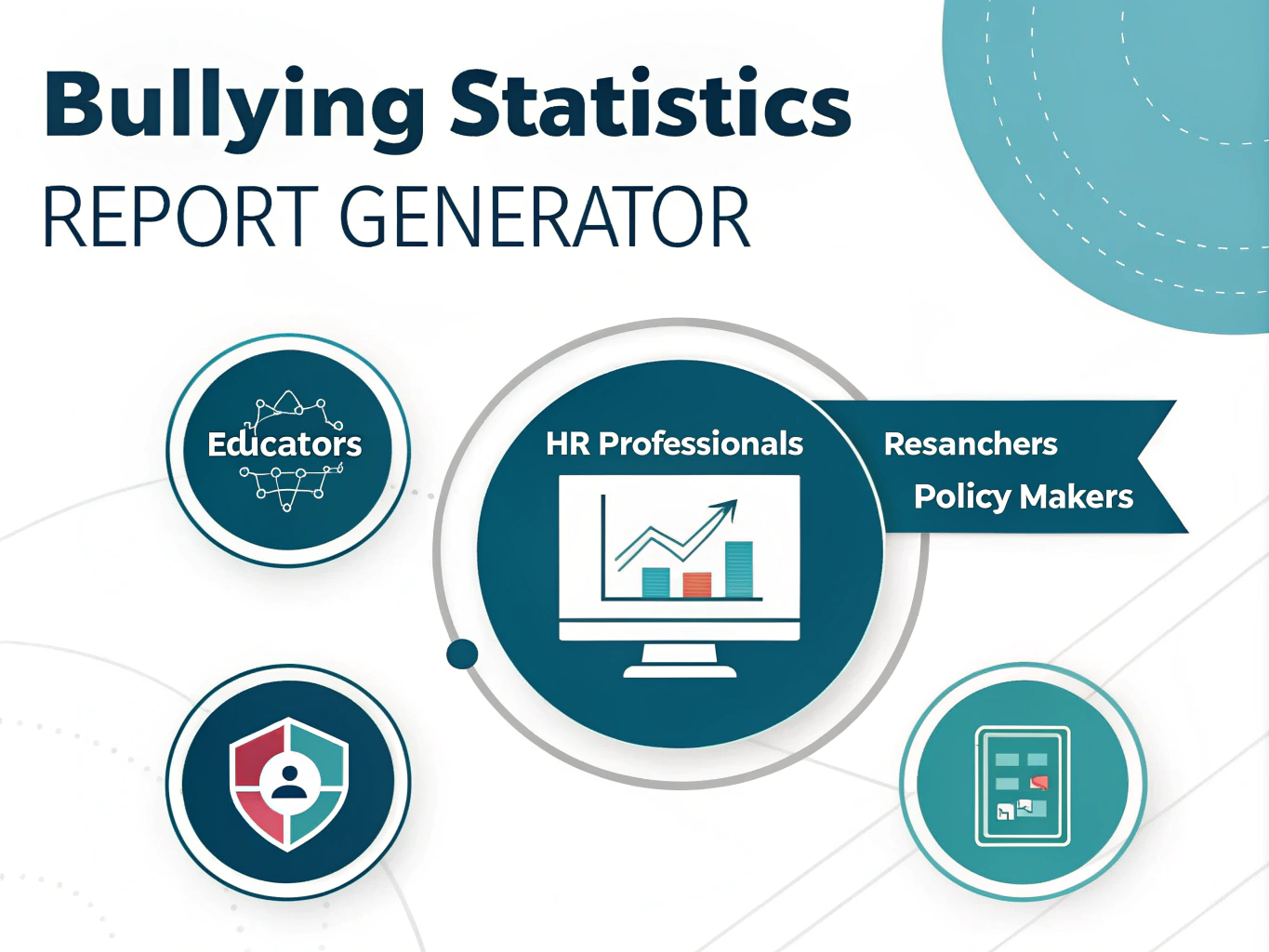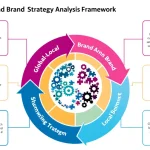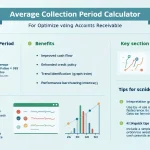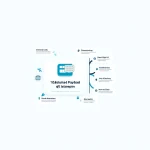Bullying Statistics Report Generator
Generating report...
Is this tool helpful?
How to Use the Bullying Statistics Report Generator Effectively
Use the Bullying Statistics Report Generator to get detailed insights into bullying trends across different regions, timeframes, and settings. Follow these steps to create a custom report tailored to your needs:
- Specify regions or countries: Enter the geographical areas you want to analyze, such as “Canada, Southeast Asia, and South America” or “Urban areas in Eastern Europe.”
- Define the time period: Set the date range for your data, for example “2010-2020” or “Last three years.”
- Choose settings: Indicate environments where bullying occurs, such as “Colleges and online communities” or “Workplaces and public spaces.”
- Optional demographic groups: Enter target demographics for focused analysis, like “Young adults aged 18-25” or “Women in tech industries.”
- Generate your report: Submit your inputs to receive a comprehensive bullying statistics report customized to your criteria.
After generating the report, you can review the data to inform anti-bullying strategies or share the insights easily as needed.
What the Bullying Statistics Report Generator Is and How It Helps You
The Bullying Statistics Report Generator is a user-friendly tool designed to give you up-to-date, reliable data on bullying incidents. It allows you to explore bullying patterns by focusing on specific locations, timeframes, settings, and populations.
Key Benefits of Using the Tool
- Customizable search criteria: You control which regions, years, settings, and demographics to include in your report.
- Comprehensive data aggregation: The tool collects data from multiple trusted sources, giving you a broad picture.
- Time-saving efficiency: Quickly generate consolidated reports without sifting through many databases.
- Supports data-driven decisions: Use accurate statistics to plan anti-bullying programs or policies.
- Identifies long-term trends: Analyze bullying behaviors over specified time periods to spot changes.
- Enables cross-cultural comparisons: Compare bullying rates among different countries or regions for tailored interventions.
Practical Applications of the Bullying Statistics Report Generator
This report generator serves multiple users, helping them understand bullying data to improve prevention and management efforts. Here are some specific ways you can use it:
1. Creating Targeted School Programs
Analyze bullying patterns in your district to tailor prevention programs effectively.
- Identify increases in cyberbullying or physical bullying at particular school levels.
- Develop age-appropriate curricula targeting the most affected groups.
- Evaluate program impact by tracking incident rates over time.
2. Improving Workplace Policies
Use industry-specific bullying data to enhance company anti-harassment measures.
- Benchmark your organization’s bullying rates against similar companies.
- Focus training on high-risk departments or demographics.
- Measure policy effectiveness by comparing trends before and after implementation.
3. Supporting Public Health Campaigns
Gather detailed statistics to design focused awareness and intervention campaigns.
- Highlight vulnerable groups such as LGBTQ+ youth or ethnic minorities.
- Provide data for educational materials stressing the mental health impacts of bullying.
- Track progress and adjust campaigns based on updated statistics.
4. Aiding Academic and Sociological Research
Access reliable data to support studies on bullying’s causes, impacts, and trends.
- Identify gaps in existing research by comparing data across areas or groups.
- Formulate hypotheses based on observed statistical correlations.
- Publish findings backed by current and region-specific data.
5. Informing Policy and Legislative Decisions
Use precise statistics to shape effective anti-bullying laws and funding allocations.
- Assess how well current policies reduce bullying incidents.
- Identify jurisdictions that need legislative attention or program support.
- Ground budget proposals in data demonstrating community needs.
Why Accurate Bullying Statistics Matter for Anti-Bullying Efforts
Reliable bullying data is essential to understanding and addressing the issue effectively. Here’s how precise statistics support your goals:
Quantifying the Scope
Numbers reveal how widespread bullying is, where it happens, and who it affects.
Targeting Interventions
Detailed statistics help you focus on the settings and groups most at risk.
Monitoring Progress
Tracking trends over time allows you to evaluate anti-bullying programs’ success.
Raising Awareness
Data paints a clear picture that supports education and advocacy efforts.
Informing Policy
Accurate reports give policymakers evidence needed to develop effective laws and initiatives.
Important Disclaimer
The calculations, results, and content provided by our tools are not guaranteed to be accurate, complete, or reliable. Users are responsible for verifying and interpreting the results. Our content and tools may contain errors, biases, or inconsistencies. Do not enter personal data, sensitive information, or personally identifiable information in our web forms or tools. Such data entry violates our terms of service and may result in unauthorized disclosure to third parties. We reserve the right to save inputs and outputs from our tools for the purposes of error debugging, bias identification, and performance improvement. External companies providing AI models used in our tools may also save and process data in accordance with their own policies. By using our tools, you consent to this data collection and processing. We reserve the right to limit the usage of our tools based on current usability factors.







